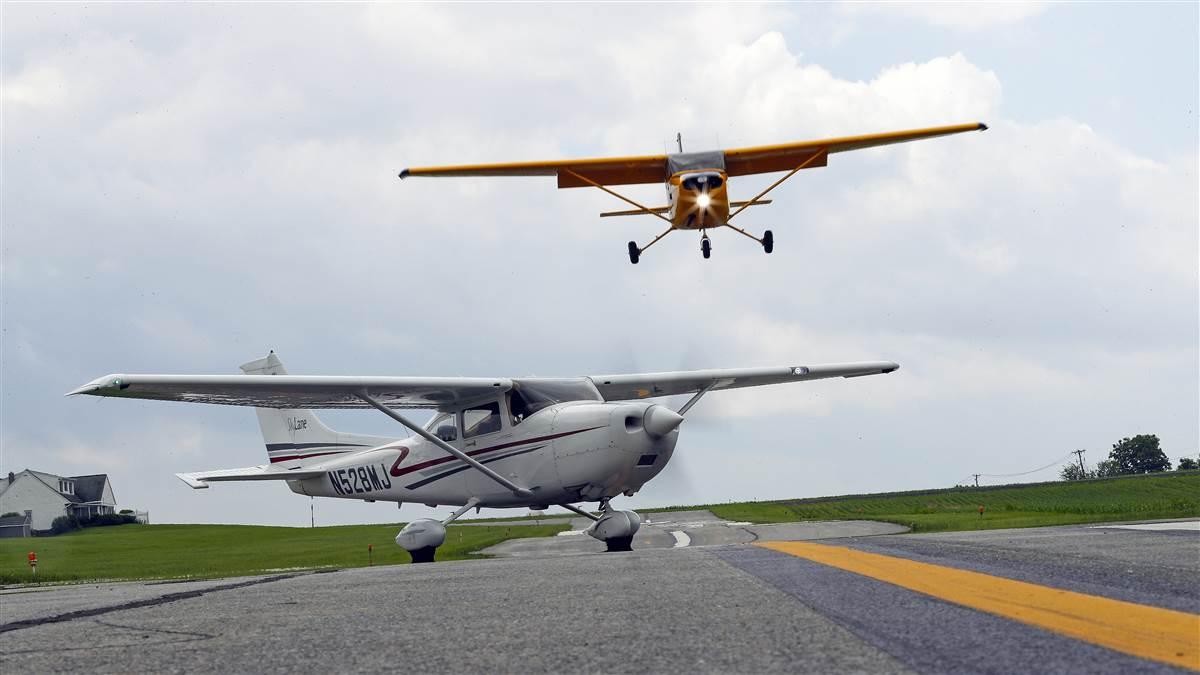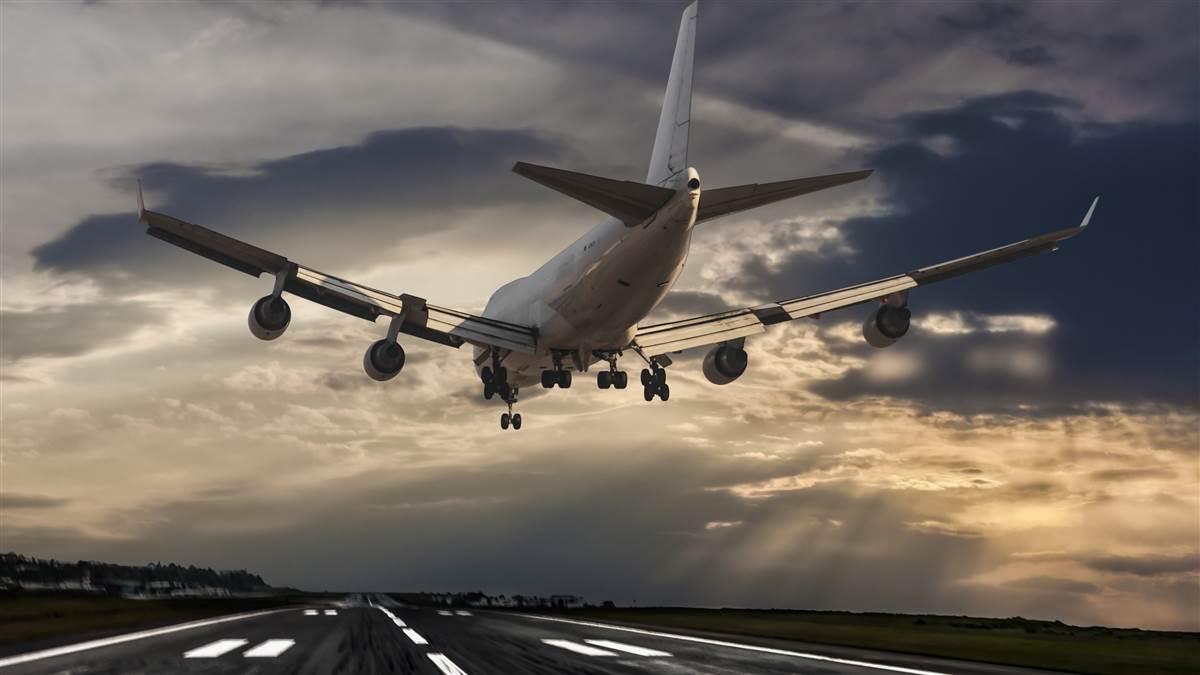Change your mind
Practice and perfect your go-arounds

- You are on about a quarter-mile final to the nontowered airport when the Cessna that was holding short of the active runway decides to make a break for it. The airplane might be wheels up and well on its way before you touch down—but then again, it might not.
- As you turn final, you misjudge the gusty crosswind pushing you off course, and you end up well to the right of your desired ground track.
- •On a night flight to an unfamiliar airport, you turn final and head toward the numbers, only to see the red-over-red light of the precision approach path indicator flare a warning: You’re too low on the glidepath. During the day that might not be an issue, but at night you’re just not sure where an obstacle might be.
- A deer scampers across the runway. You know from experience that there’s probably one or more behind it.
- Landing at an unfamiliar airport, your approach speed is too high and your touchdown point is going to be about halfway down the 3,000-foot runway.
When would you go around? If you answered “all five,” congratulations. A go-around is appropriate for each of these scenarios.
Go-around is the term for when you elect or are instructed not to continue your approach to your intended runway, but instead to “go around” for another try. You add power, remove any carburetor heat, carefully retract flaps, retract landing gear if necessary, overfly the airport, and re-enter the pattern on the crosswind leg.
The go-around decision rests with the pilot in command, but at a towered airport, an air traffic controller may instruct you to go around—generally to avoid another aircraft on the runway—or you may initiate a go-around. When you go around, inform the controller of your intentions after you have correctly configured the airplane.
When you learn how to execute a go-around, you may think it’s a maneuver to be saved for dire circumstances: like touching down just as someone pushes a baby carriage full of puppies onto the runway. Often the reasons why you would need to break off your landing are much more commonplace—and much more insidious. And because those reasons are more insidious, it’s best to practice go-arounds often. Like memorizing an emergency checklist, a go-around is a skill you should keep in your pocket and pull out whenever necessary.
Obstacles on the runway
Your flight instructor will introduce you to many scenarios in which a go-around is required. A favorite, as you are concentrating on the sight picture for the landing, is to declare “There’s a deer on the runway!” and sit back and watch what you do.
Smoothly apply full power and pitch the airplane to a climb attitude. Remember to anticipate the pitch-up tendency when full power is applied—you want the nose to come up but not too high an angle of attack. Be ready with rudder to counteract the left-turning tendencies.
When you achieve a positive rate of climb, begin removing flaps—not all at once, but a notch at a time. Retract the landing gear if it’s a retractable gear aircraft.
Although you are overflying the runway, you will want to move to one side if conflicting traffic is a factor. This will ensure that you can keep any traffic beneath you in sight as you pass overhead.
Don’t try to ‘save’ the approach
Sometimes the desire to stick the landing is the hazardous attitude that pilots must guard against. If you overshoot the base-to-final turn, you may be tempted to get the airplane back on course while in the turn by steepening the bank angle.

There are dozens of accident records of pilots who had that same temptation. Here’s why you should just go around instead. The airplane is slowed to well below cruise speed, and stall speed increases as bank angle increases. A buffet from a strong gust could increase the load factor and prompt an accelerated stall—at an altitude way too low to recover. Many also make the mistake in this situation of skidding the nose toward the runway with rudder. Skidding increases the speed of the outside wing, increasing its lift. The airplane banks more steeply—and so you compensate by applying opposite aileron. Now the airplane is cross-controlled—and if the airspeed decays, once again you have set yourself up for a stall/spin scenario.
Crosswinds can challenge any pilot. If you cannot get back on the extended centerline by flying into the crosswind and aligning the aircraft with the runway once re-established, the safest course of action is to go around.
The runway behind you
You’ve heard it said the runway behind you is no use to you.Carry too many extra knots of extra airspeed on the final approach and you may have to float—and float, and float—to bleed off that airspeed before you can touch down. If you haven’t touched down in the first third of the runway, go around. Rather than run off the end of the runway trying to salvage a poor approach, you’ll have a fresh opportunity to make a perfect approach and landing.
Go-around mishaps
Once you have learned how to go around, keep practicing. Accident records include many instances of go-arounds that went wrong. In the case of a pilot flying a 450-horsepower Howard DGA–15, the pilot attempted a go-around after touching down left of the centerline in a gusty crosswind. The National Transportation Safety Board’s final report found that the pilot failed to adequately compensate for the extreme left-turning tendencies of the high-powered engine, which resulted in a subsequent loss of control and aerodynamic stall.
The pilot of a Kitfox performed a go-around that went awry after floating and touching down farther on the runway than he had anticipated. On the climbout, the pilot made a shallow turn to the left to avoid a cliff that was off the right side of the unimproved airstrip. The left wing of the airplane struck a tree; the aircraft cartwheeled and struck the ground, according to the NTSB report.
Practice go-arounds, and practice them at different airports. The extra minutes in the pattern and accompanying extra fuel burn will pay dividends in the future.

 Like the pros
Like the pros

